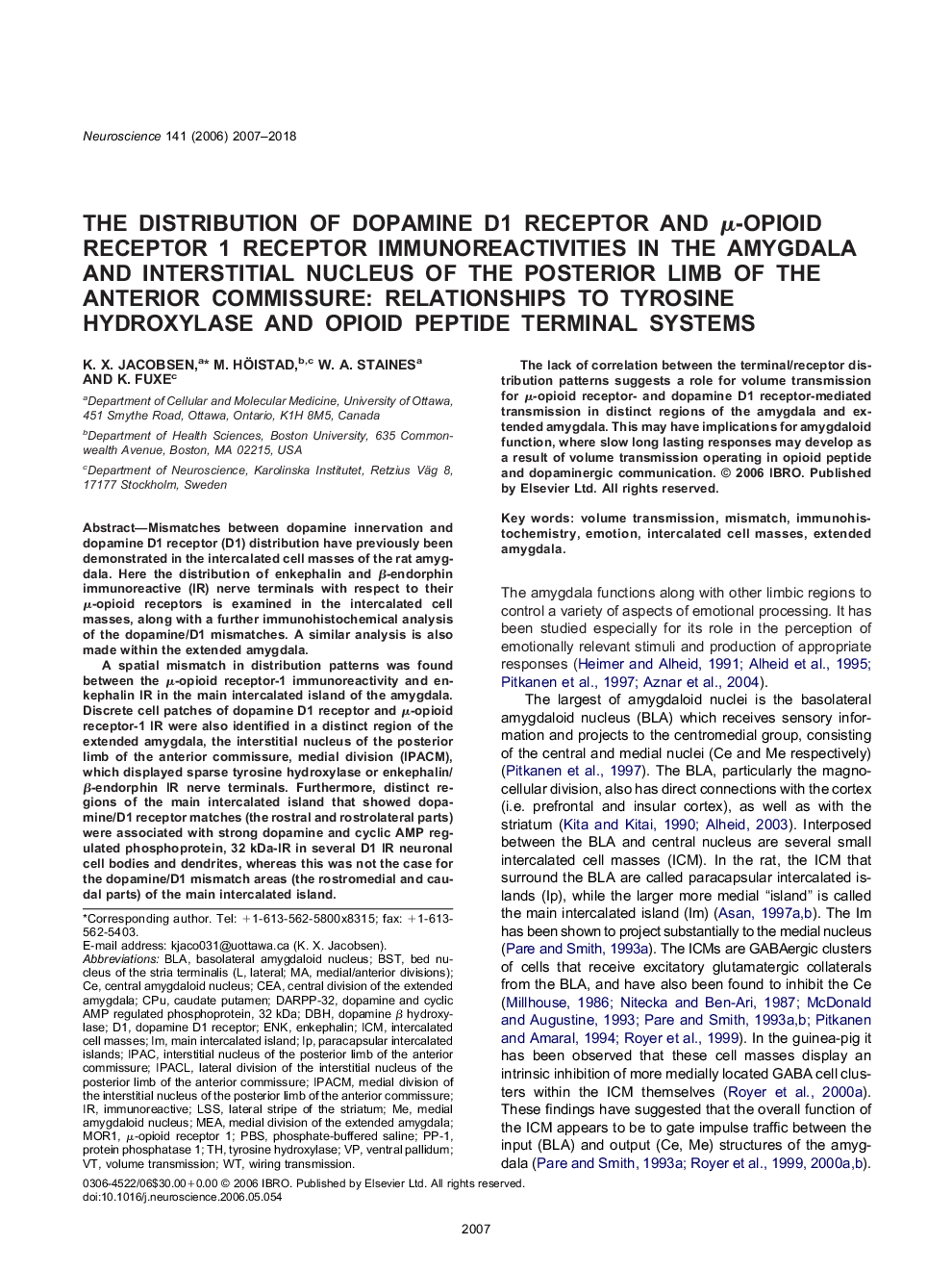| Article ID | Journal | Published Year | Pages | File Type |
|---|---|---|---|---|
| 4342112 | Neuroscience | 2007 | 12 Pages |
Mismatches between dopamine innervation and dopamine D1 receptor (D1) distribution have previously been demonstrated in the intercalated cell masses of the rat amygdala. Here the distribution of enkephalin and β-endorphin immunoreactive (IR) nerve terminals with respect to their μ-opioid receptors is examined in the intercalated cell masses, along with a further immunohistochemical analysis of the dopamine/D1 mismatches. A similar analysis is also made within the extended amygdala.A spatial mismatch in distribution patterns was found between the μ-opioid receptor-1 immunoreactivity and enkephalin IR in the main intercalated island of the amygdala. Discrete cell patches of dopamine D1 receptor and μ-opioid receptor-1 IR were also identified in a distinct region of the extended amygdala, the interstitial nucleus of the posterior limb of the anterior commissure, medial division (IPACM), which displayed sparse tyrosine hydroxylase or enkephalin/β-endorphin IR nerve terminals. Furthermore, distinct regions of the main intercalated island that showed dopamine/D1 receptor matches (the rostral and rostrolateral parts) were associated with strong dopamine and cyclic AMP regulated phosphoprotein, 32 kDa-IR in several D1 IR neuronal cell bodies and dendrites, whereas this was not the case for the dopamine/D1 mismatch areas (the rostromedial and caudal parts) of the main intercalated island.The lack of correlation between the terminal/receptor distribution patterns suggests a role for volume transmission for μ-opioid receptor- and dopamine D1 receptor-mediated transmission in distinct regions of the amygdala and extended amygdala. This may have implications for amygdaloid function, where slow long lasting responses may develop as a result of volume transmission operating in opioid peptide and dopaminergic communication.
